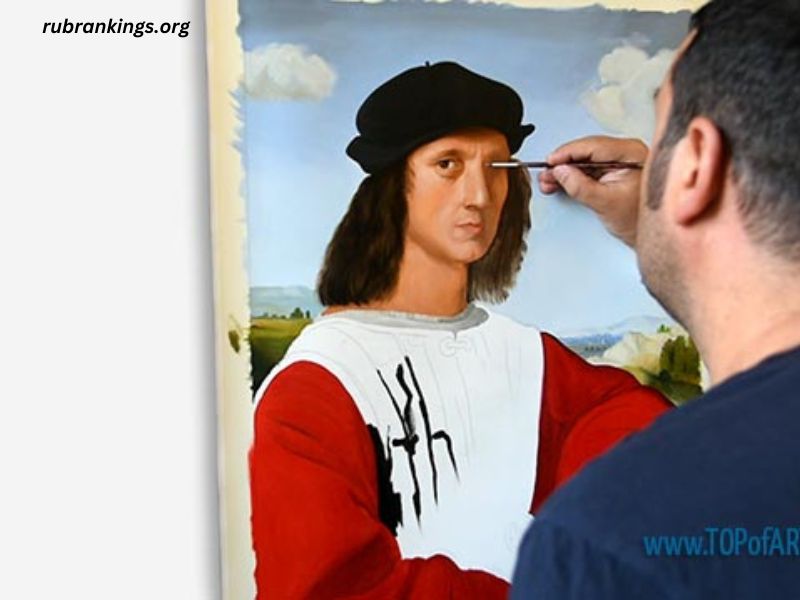Andrea Del Sarto’s name may not be as famous as Michelangelo or Leonardo da Vinci, but his artistry holds its own in the annals of Renaissance art. Known as “The Faultless Painter” for his technical precision, Andrea Del Sarto remains an enigmatic yet captivating figure in art history. Among his celebrated works, The Sacrifice of Isaac stands out—not only for its breathtaking composition but also for the layers of storytelling and symbolism embedded within it.
This blog invites art lovers, history buffs, and literary enthusiasts to explore Andrea Del Sarto’s The Sacrifice of Isaac. From historical context to artistic brilliance, we’ll unpack the elements that make this 16th-century masterpiece a timeless contribution to art and culture.
Setting the Stage for Greatness
Andrea Del Sarto (1486–1530) was an Italian painter from Florence, a cradle of Renaissance creativity. A contemporary of titans like Raphael and Michelangelo, Del Sarto brought an understated yet extraordinary finesse to the canvas. His ability to blend meticulous detail with soft, poetic emotion earned him a reputation as one of the finest painters of his time, albeit one less prone to self-promotion. His works primarily reflect the religious fervor of a society deeply embedded in its faith, telling stories that resonate both spiritually and emotionally.
The Sacrifice of Isaac places Del Sarto’s talent on full display, offering an exquisite interpretation of one of the Bible’s most dramatic and heart-wrenching tales. Though Del Sarto painted multiple variations of this story, his 1527 version remains among the most studied and admired to this day.
A Closer Look at The Sacrifice of Isaac
The painting illustrates the Biblical story from Genesis 22, where God commands Abraham to sacrifice his son, Isaac, as a test of faith. Just as Abraham raises the knife, an angel intervenes, providing a ram as a substitute for the sacrifice. This emotionally charged narrative has been a favorite among artists for centuries, offering a dramatic interplay of obedience, love, and divine intervention.
The Composition
A hallmark of Del Sarto’s brilliance is the dynamic composition of The Sacrifice of Isaac. The painting centers on Abraham and Isaac, their figures intertwined in a moment of powerful tension. Abraham’s body bends forward, his grip firm as he prepares to obey God’s command. Meanwhile, Isaac twists beneath him, vulnerability and fear written across his face.
The angel, descending into the scene mid-action, drives the viewers’ attention to the focal point—the knife just inches away from Isaac’s neck. The positioning of the characters creates a triangle within the frame, a classical Renaissance technique that draws the eye and gives the composition a balanced, harmonious feel.
The Color Palette
Andrea Del Sarto’s mastery of color is another standout feature of this piece. The earthy tones of the landscape contrast with the vibrant clothes of the figures—Abraham’s deep red robe, Isaac’s pale flesh, and the angel’s shimmering garments. These intentional choices convey urgency and drama while reinforcing the divine nature of the intervention.
The use of light is particularly striking. A soft, golden glow bathes the figures, symbolizing God’s watchful presence. This interplay of light and shadow not only enhances depth but also gives the painting an almost ethereal quality, as if we are witnessing a moment outside of ordinary time.
Techniques That Dazzle
One of Del Sarto’s technical strengths is his sfumato technique—the subtle blending of colors and tones, which creates a soft, almost dreamlike effect. Unlike the bold, sculptural strokes of Michelangelo, Del Sarto’s brushwork feels delicate and fluid. Every detail, from Abraham’s weathered hands to the folds in Isaac’s robe, demonstrates painstaking precision.
Interpreting the Symbolism
The Sacrifice of Isaac is more than a literal Biblical depiction—it’s an exploration of profound universal themes.
- Faith and Obedience: Abraham’s willingness to sacrifice his beloved son underscores unwavering devotion, a central tenet of Renaissance theology and culture.
- Divine Mercy: The angel’s intervention serves as a reminder of God’s compassion, offering hope and redemption in even the darkest moments.
- Human Emotion: Del Sarto masterfully captures the deeply human aspect of the story—Abraham’s anguish, Isaac’s terror, and the quiet resolve of ultimate surrender to fate.
Art historians often point out that The Sacrifice of Isaac could also serve as a meditation on the relationships between father and son, humanity and divinity, and doubt and faith.
Art, Literature, and History in the Renaissance
To understand the full impact of The Sacrifice of Isaac, it’s important to see it in the broader context of the Renaissance—a period where art, literature, and history were deeply intertwined. The rediscovery of classical antiquity inspired artists like Del Sarto to explore Biblical and mythological themes with new levels of realism and emotional depth.
At the same time, figures like Dante, Petrarch, and Machiavelli were shaping the literary world, often drawing on the same sources of inspiration as visual artists. This interdisciplinary approach created a rich cultural tapestry that still resonates today.
The story of Isaac also reflects the Renaissance’s fascination with human psychology. What were Abraham’s thoughts as he prepared the altar? How did Isaac process his father’s intentions? These questions bring a timeless relatability to the story, making it as compelling today as it was five centuries ago.
Andrea Del Sarto: The Painter and His Legacy
Though often overshadowed by his more famous peers, Andrea Del Sarto occupies a unique place in art history. His work combines technical mastery with poetic sensitivity, making him a favorite among connoisseurs. Vasari, the renowned biographer of Renaissance artists, famously described Del Sarto as “faultless,” a testament to his skill and precision.
Yet Del Sarto’s personal life was fraught with challenges. A complicated marriage and financial struggles cast a shadow over his career, and his reputation never reached the heights of some of his contemporaries. Nevertheless, his influence can be seen in the work of later artists, particularly in his balanced compositions and lifelike portrayal of human emotion.
Why The Sacrifice of Isaac Still Matters
What makes Andrea Del Sarto’s The Sacrifice of Isaac endure? For one, its themes are universal and timeless. The painting speaks to the complexities of faith, sacrifice, and the human condition—questions we continue to grapple with today.
For art lovers, the piece offers a masterclass in Renaissance techniques, from composition to color theory. For history buffs, it serves as a window into a world where art was both a spiritual and cultural endeavor. And for literary enthusiasts, it connects visual storytelling with the rich narratives of religious and classical texts.
Andrea Del Sarto may have been dubbed the “faultless painter,” but his work is far from emotionless. The Sacrifice of Isaac invites us to pause, reflect, and engage with the profound beauty of art and its ability to tell stories that transcend time.



